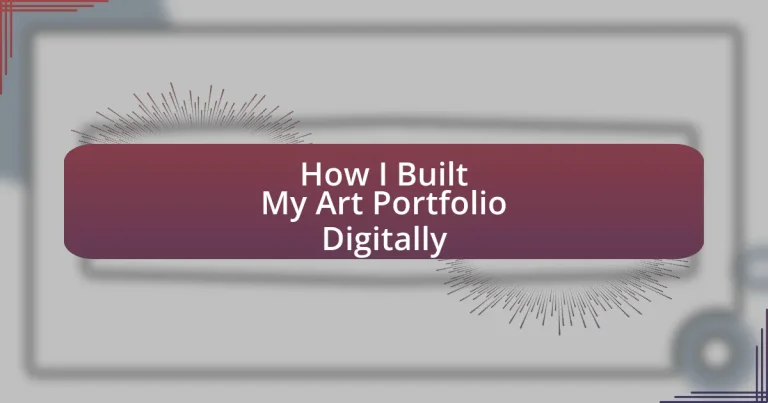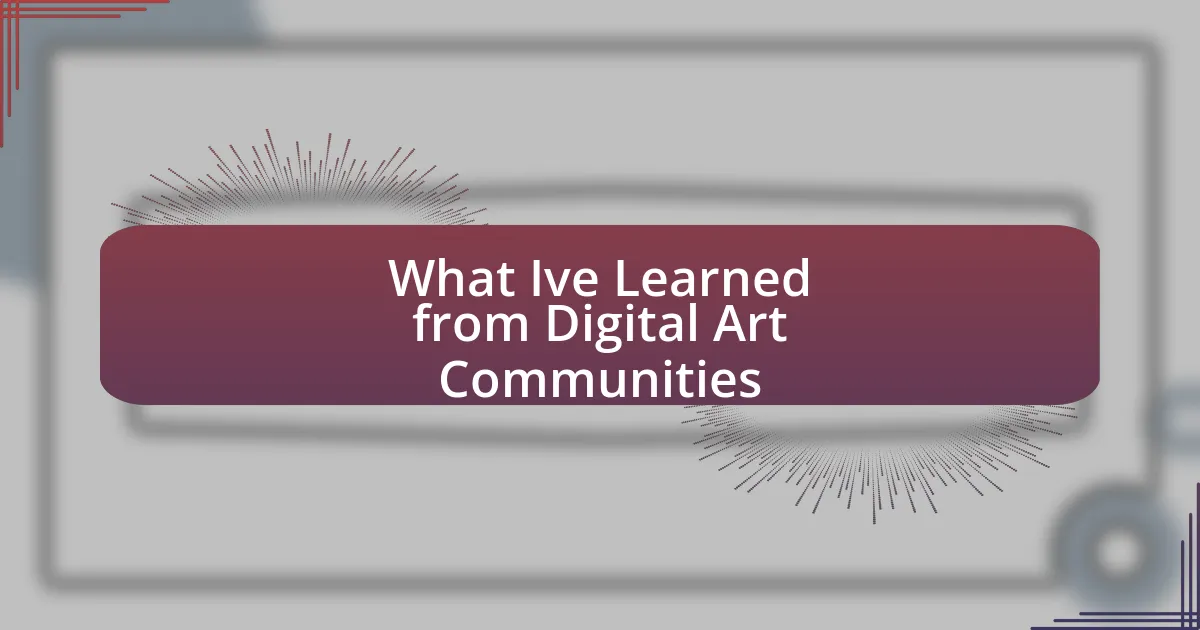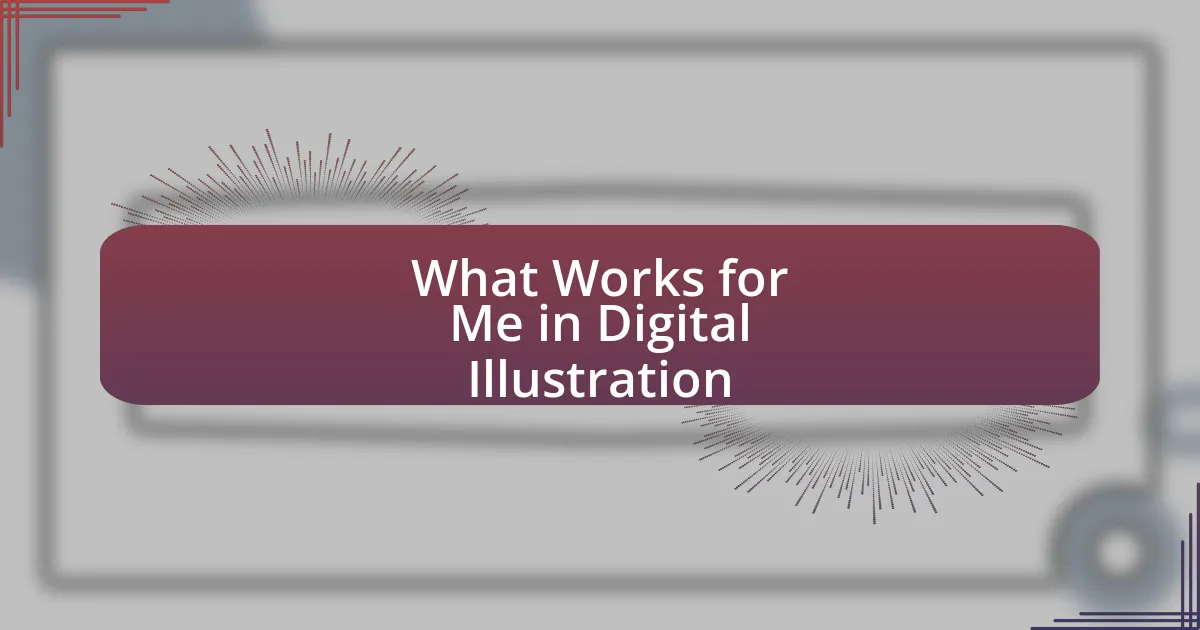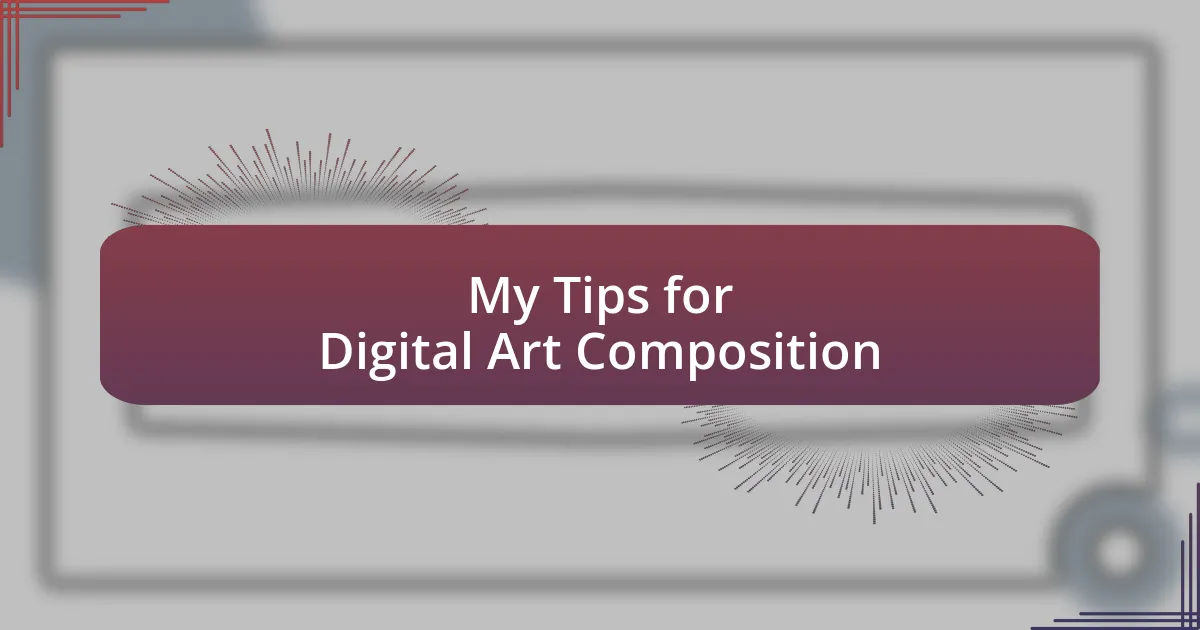Key takeaways:
- Art portfolios reflect an artist’s journey and identity, enhancing opportunities through cohesive presentation and storytelling.
- Choosing the right digital tools, organizing artworks by themes, and regularly updating the portfolio are crucial for effective showcasing.
- Authenticity and the narrative behind artworks help establish emotional connections with viewers, making art more relatable and memorable.
- Promoting the portfolio through social media, collaborations, and consistent engagement can significantly increase visibility and audience connection.
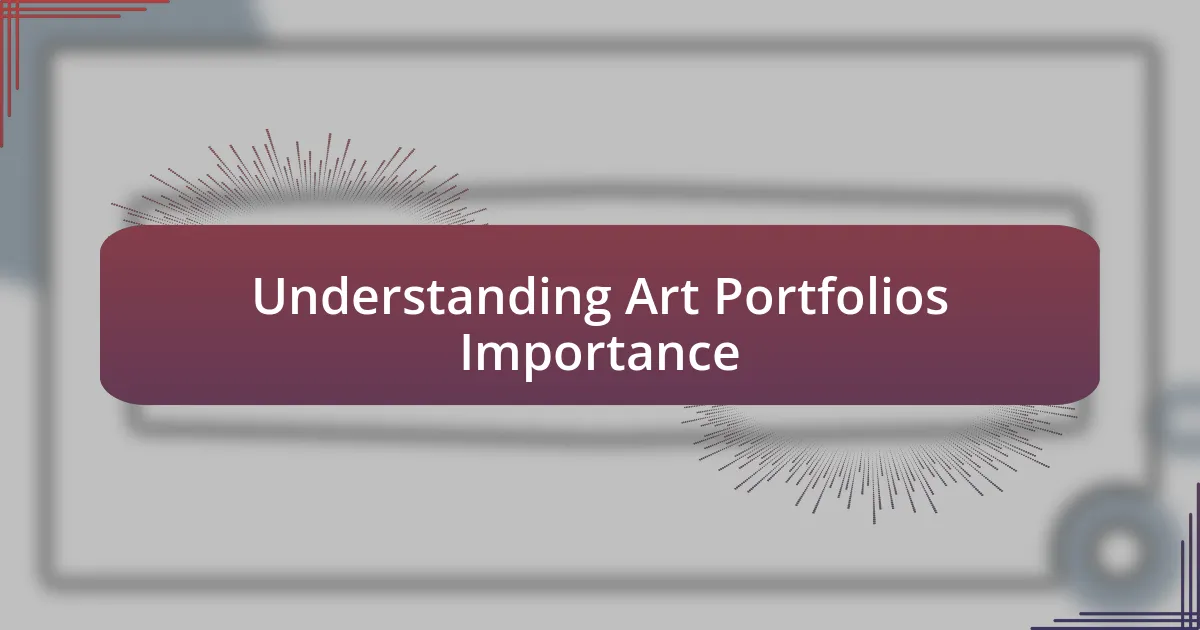
Understanding Art Portfolios Importance
Art portfolios are not just a collection of work; they are a reflection of your artistic journey and identity. I remember feeling both excited and anxious when I first created mine. It served as a visual narrative of my skills and evolution, showing potential clients or galleries who I am as an artist. Wouldn’t it be amazing if your portfolio could tell your story on its own?
Having a well-constructed portfolio can open doors that creativity alone might not. When I was applying for opportunities, I discovered that a cohesive presentation of my work made a significant impact. It’s like walking into a room where you’re in control; your art can speak volumes without saying a word. Can you imagine the confidence you feel when your hard work is beautifully showcased?
In a digital age, accessibility heightens the importance of a well-crafted art portfolio. Remember the thrill when I began sharing my work online? I realized that my portfolio had the potential to reach audiences far beyond my immediate community. It transformed not just how I presented my work, but also how I connected with others in the art world. Isn’t it fascinating how a digital presence can amplify our creative voices?
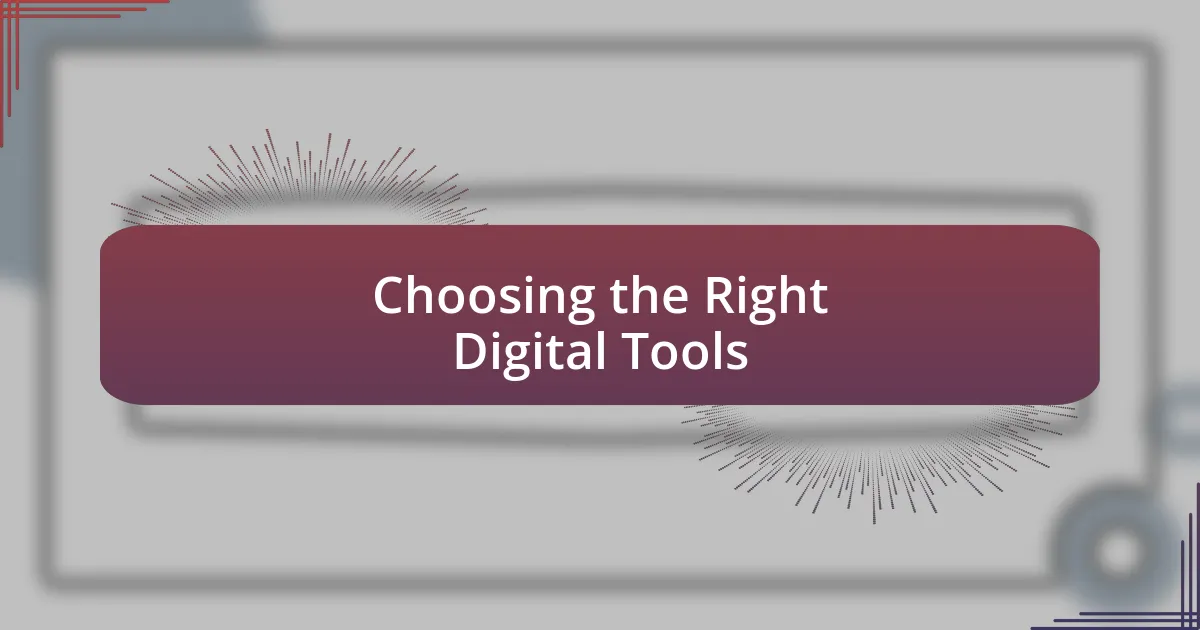
Choosing the Right Digital Tools
Choosing the right digital tools for your art portfolio can be a game-changer. Early on, I learned the importance of finding software that matched my artistic style and workflow. Stumbling upon the right platforms not only enhanced my presentation but also made the process enjoyable, as I felt more empowered to express my vision.
Here are some crucial tools to consider:
- Portfolio Websites: Platforms like Squarespace or Wix allow for easy customization and a professional look.
- Image Editing Software: Tools such as Adobe Photoshop and Lightroom are essential for perfecting your artwork.
- Social Media Tools: Apps like Canva help create engaging visuals for platforms like Instagram.
- Cloud Storage: Google Drive or Dropbox provides a safe place to store and back up your work.
- Collaboration Tools: If you’re working with others, apps like Slack or Trello can keep communication smooth and organized.
Selecting these tools can create a seamless experience that reflects the heart of your work while connecting you to your desired audience. I’ve found that using a mix of these resources allowed me to enhance my portfolio, creating moments of joy and satisfaction as I saw my art come alive online.
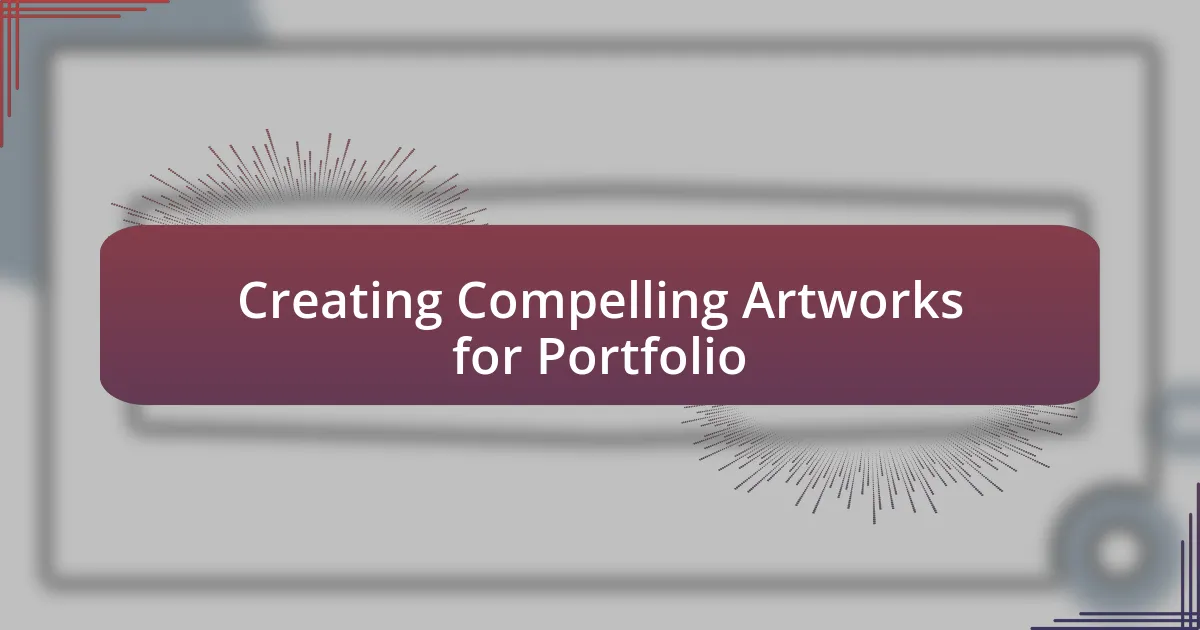
Creating Compelling Artworks for Portfolio
Creating compelling artworks for your portfolio involves more than just showcasing your talent; it’s about telling your unique story. I vividly remember the first time I decided to create a piece specifically for my portfolio. It was more than just paint on canvas; I poured my emotions and experiences into it. That artwork not only captured my style but also represented a significant moment in my artistic journey, making it memorable for both me and those who viewed it.
As I developed my portfolio, I discovered that consistency in style was crucial. This doesn’t mean every piece has to look the same, but there should be a thematic connection that resonates with your audience. I once experimented with various color palettes and styles, which led to mixed feedback. It taught me the value of maintaining a cohesive look—while it’s great to explore, finding a signature style captivates viewers and invites them to dive deeper into my work.
Another pivotal realization was the power of storytelling through each artwork. I began to reflect on the narratives behind my creations—what inspired each piece, what emotions I wanted to convey, and how they relate to my broader artistic vision. Sharing this context within my portfolio brought a new dimension to my work, allowing viewers to feel connected. It transforms mere visuals into relatable experiences, and I found that people remember the stories long after viewing the art.
| Aspect | Details |
|---|---|
| Emotional Connection | Artworks should resonate with personal experiences and evoke emotions. |
| Consistency | A cohesive style enhances the overall presentation and makes a lasting impression. |
| Storytelling | Including narratives behind each piece adds depth and creates a bond with your audience. |
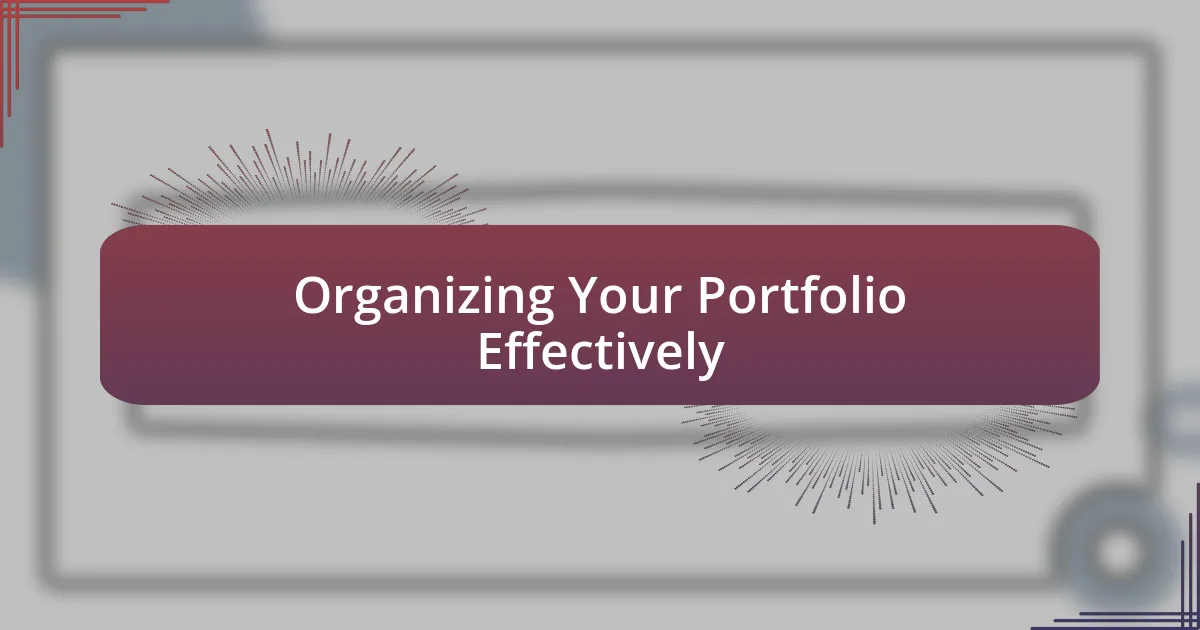
Organizing Your Portfolio Effectively
When it comes to organizing your portfolio effectively, I’ve found that categorizing your artworks can make a significant difference. For instance, I once grouped my pieces by theme—like nature, emotions, and abstract explorations. This allowed viewers to appreciate not just individual pieces, but also the overarching messages I was trying to communicate. Isn’t it fascinating how a simple organizational method can enhance the storytelling aspect of your art?
Layout matters too. I remember the first time I created an online portfolio; I spent hours tweaking the design. I wanted each artwork to shine in its own right, while also fitting seamlessly into the overall presentation. A clean, user-friendly design makes it easier for potential clients or galleries to navigate through your work. Have you ever tried to browse an art portfolio that felt cluttered? It’s overwhelming, isn’t it? Simplicity can be striking.
Lastly, don’t underestimate the importance of updating your portfolio regularly. As I reflect on my journey, I recognize that my style has evolved, and some older pieces no longer represent who I am as an artist today. I make it a point to review my portfolio at least twice a year, removing works that don’t resonate anymore and adding fresh pieces that reflect my current direction. This not only keeps my portfolio relevant but also ensures that I’m showcasing only what truly represents my artistic vision.
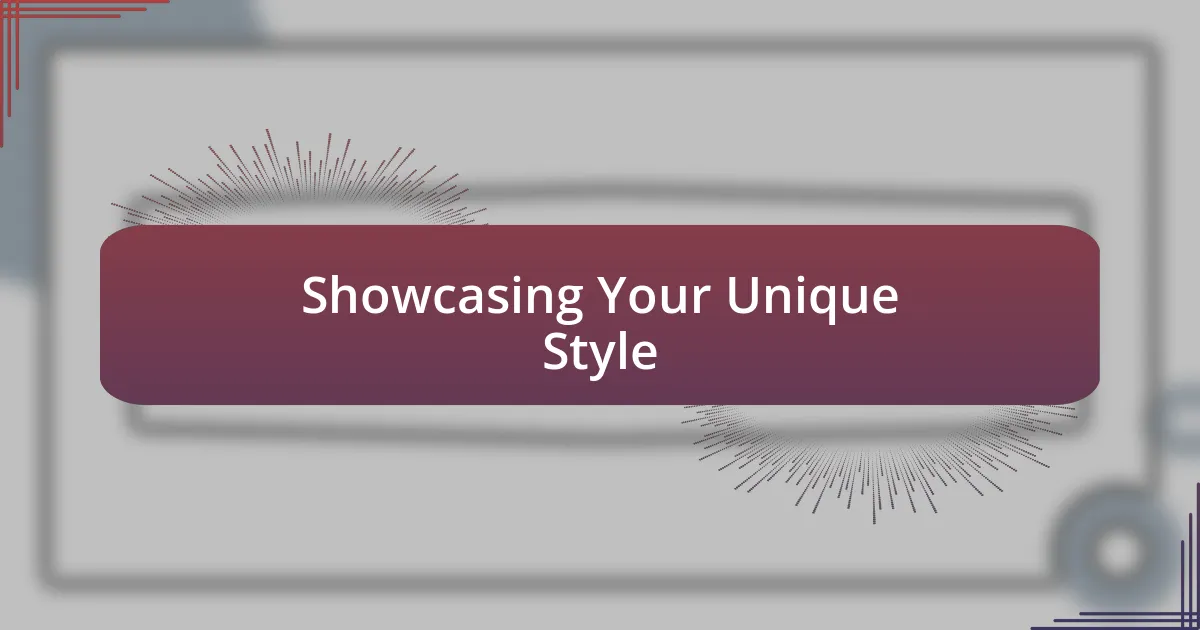
Showcasing Your Unique Style
When it comes to showcasing my unique style, I’ve learned that authenticity shines through in every piece of art. I still remember the thrill of creating a series that was deeply personal to me, intertwining my experiences with elements of my culture. It was like revealing a part of my soul, and I found that viewers connected with those artworks on an emotional level. Have you ever poured your heart into something and felt that instant recognition from others?
Additionally, I discovered that experimenting with different mediums helped me define my artistic voice. There was a time I dabbled in digital art after years of traditional painting and found it mind-opening. The freedom to explore colors and forms digitally brought unexpected depths to my work. This exploration not only broadened my portfolio but also led to pieces that truly felt like “me.” What new techniques or materials have you considered that might reflect your style?
Ultimately, I believe the narrative behind my art is just as important as the pieces themselves. I’ve started including short descriptions for each artwork, sharing my thought processes and inspirations. For instance, one of my favorite pieces was inspired by a dream that felt both strange and beautiful. This context allows viewers to engage with my work on a deeper level, encouraging them to see beyond the surface. How do you share your artistic narrative to resonate with your audience?
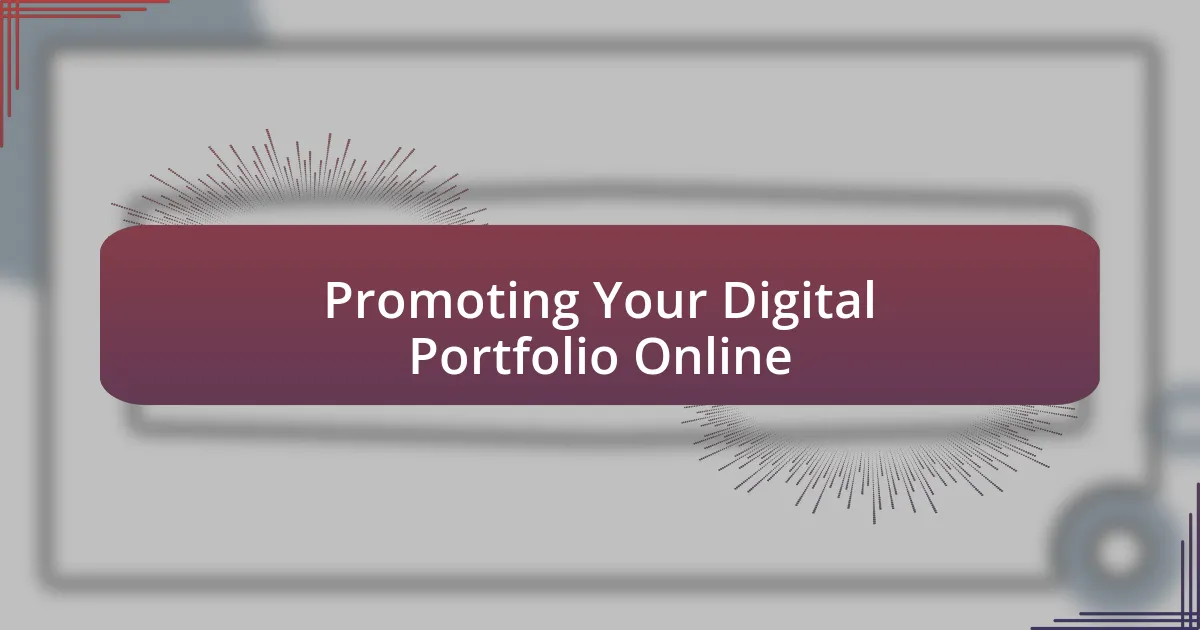
Promoting Your Digital Portfolio Online
Promoting a digital portfolio can feel daunting at first, but I found that social media became one of my best allies. For example, when I shared a time-lapse video of my art-making process on Instagram, the response was overwhelming. Have you ever tried showcasing your creative journey? It can spark interest and invite potential viewers into your world.
Another strategy that worked for me was collaborating with other artists and influencers. I remember hosting an online exhibition with a few friends, where we highlighted each other’s work. This not only expanded our audiences but also created a sense of community that was incredibly fulfilling. Have you considered reaching out to others in your field to amplify your visibility?
Lastly, I realized that consistency is key when it comes to promoting my portfolio. By regularly updating my blog with new pieces and sharing stories behind them, I cultivated a loyal following who eagerly anticipated my latest posts. How often do you engage with your audience? I’ve found that even small interactions—like responding to comments—can turn casual viewers into dedicated fans.
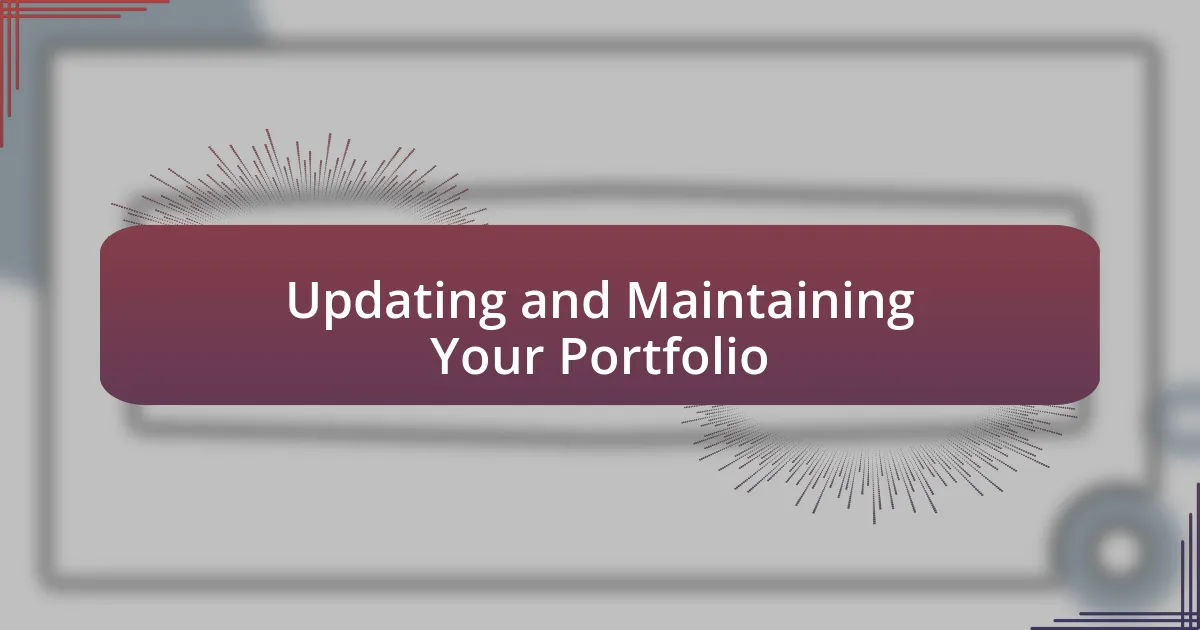
Updating and Maintaining Your Portfolio
Updating your digital portfolio is not just about adding new work; it’s essential to regularly refine and curate what you showcase. I remember a time when I revisited my portfolio after a year and realized how much my style had evolved. Have you ever noticed how your perspective shifts over time? I deleted pieces that no longer resonated with me, which made room for work that truly reflected my current artistic identity.
Maintaining an updated portfolio also means keeping an eye on the technical aspects. For instance, I realized that some of my images were pixelated, which detracted from the quality of my work. How often do you check the presentation of your pieces? By ensuring high-quality images and a seamless user experience, I made my portfolio much more inviting and professional.
Finally, I found that getting feedback from others can be invaluable. After sharing my updated portfolio with trusted peers, their insights helped me refine my selections. Have you ever sought constructive criticism about your work? Engaging with your art community not only strengthens your portfolio but also fosters relationships that can support your growth as an artist.

